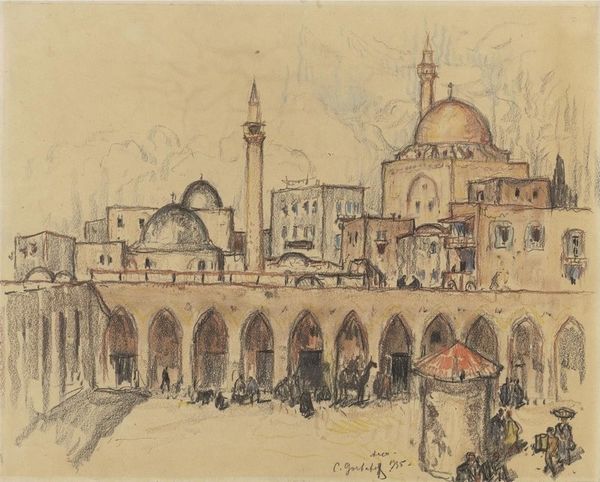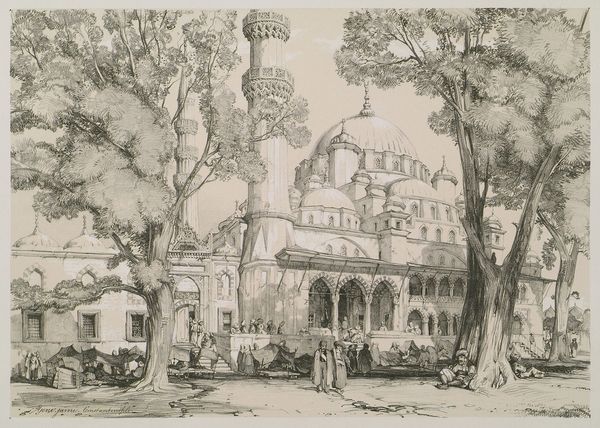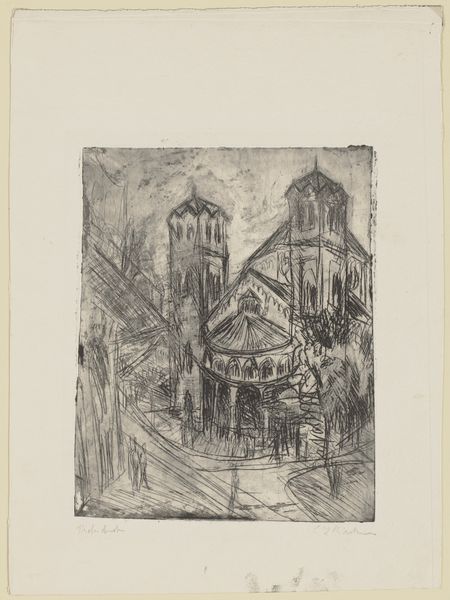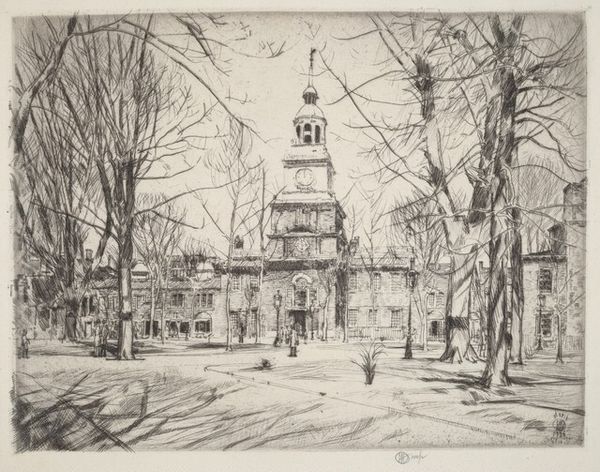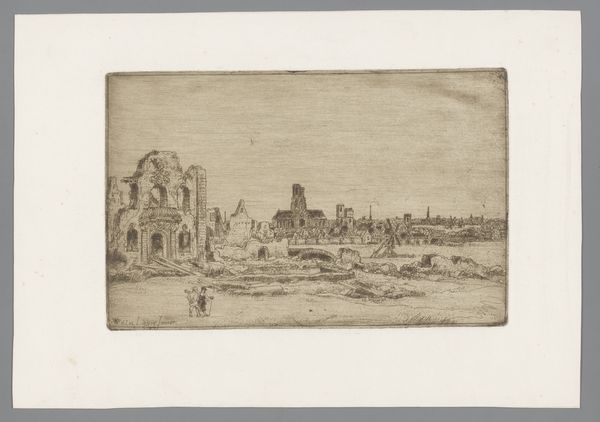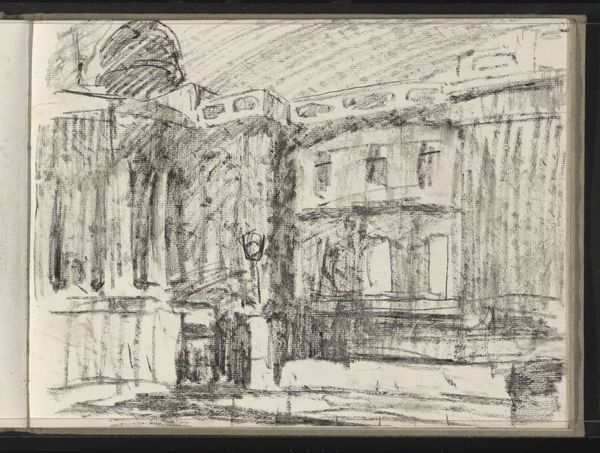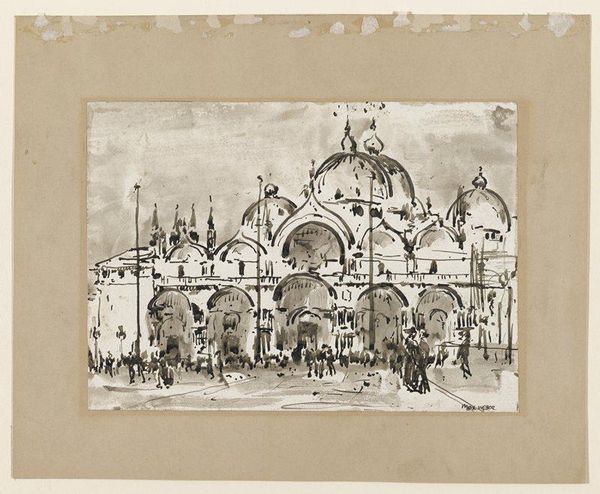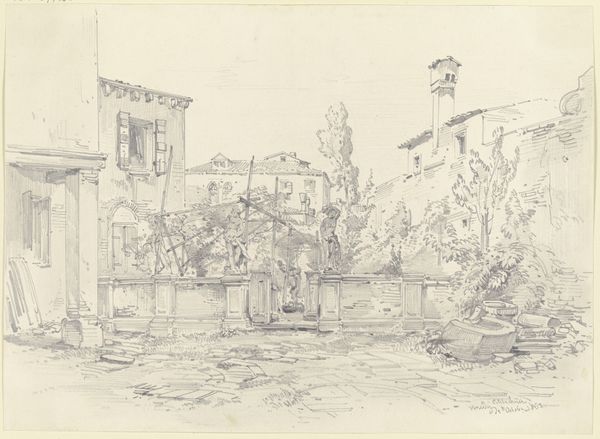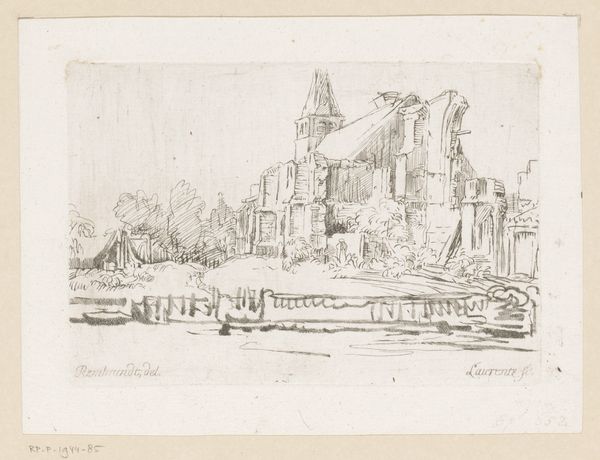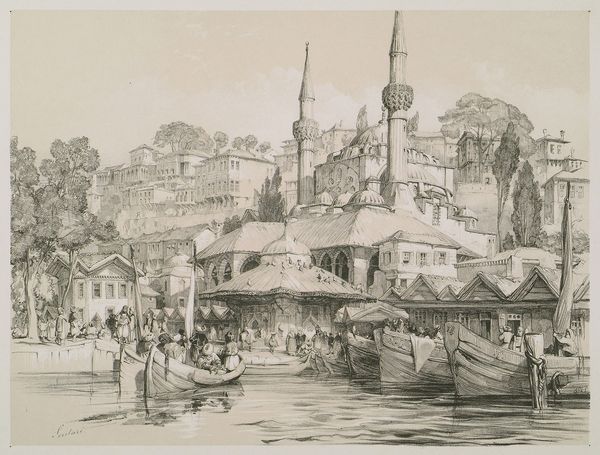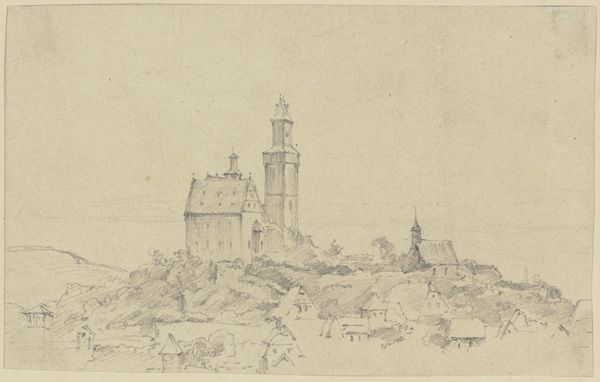
drawing, paper, ink
#
drawing
#
ink drawing
#
landscape
#
paper
#
ink
#
cityscape
#
islamic-art
#
modernism
#
monochrome
Copyright: Städel Museum, Frankfurt am Main
Editor: Oh wow, this hits me right in the gut. Stark, isn’t it? Somber, like a memory fading. The black and white exaggerates the building's heavy shape against the ghostly ground. Curator: Indeed. This is Jakob Nussbaum's "Jerusalem vor der Omar-Moschee," or "Jerusalem before the Dome of the Rock," rendered in ink on paper around 1925. Editor: The Dome of the Rock. It looks almost…mournful. Like it’s bearing the weight of history, don’t you think? Curator: Perhaps. Considering the historical context of the 1920s, we can explore Nussbaum's position as a Jewish artist engaging with the cultural landscape of Jerusalem under the British Mandate. This image, monochromatic and stark as it is, embodies the anxieties of a diasporic people, a moment where competing nationalisms, European colonialism, and religious identity intersect. Editor: So, like, all that swirling inside one shaky line of ink. Makes sense! You can almost feel that tension, that… searching. Look how the people in the foreground are rendered-- kind of blurred and rushing around. It amplifies the feeling of displacement, doesn’t it? Were these tensions affecting Nussbaum personally? Curator: Nussbaum experienced antisemitism firsthand and engaged actively in Zionist circles. The drawing might subtly reflect that internal turmoil and broader concerns about identity and place in a city sacred to multiple faiths, all vying for self-determination. Editor: It really captures the vulnerability of a community, a city. The tree there is barren like the whole world is holding its breath. It also creates a feeling of… I don’t know, intimacy almost. Like we are peering at a secret, vulnerable moment in time. It’s beautiful in its own melancholy way. Curator: Absolutely. Nussbaum's work offers a critical lens through which to consider issues of representation, historical narrative, and the precariousness of identity within colonial structures. Editor: Well, I'm looking at it differently now. Thanks for untangling that emotional knot! Curator: It's always fascinating to peel back those layers, isn't it?
Comments
No comments
Be the first to comment and join the conversation on the ultimate creative platform.
